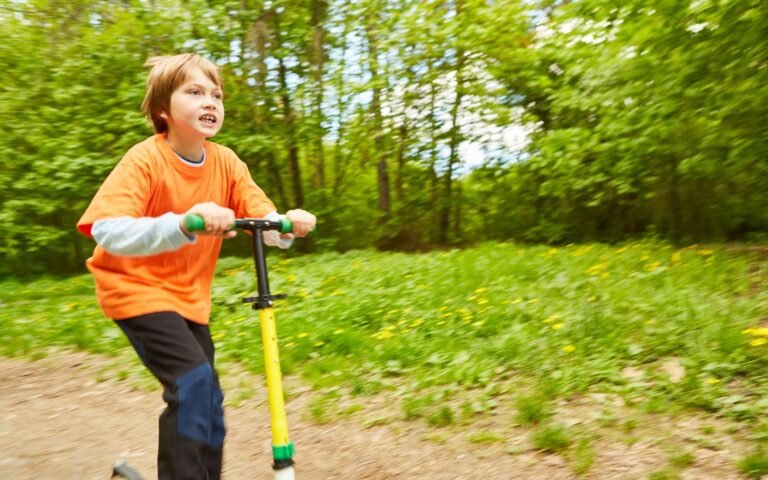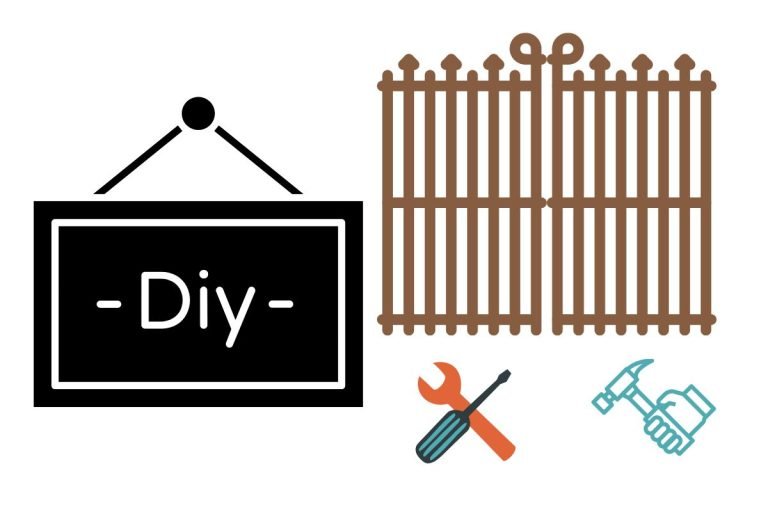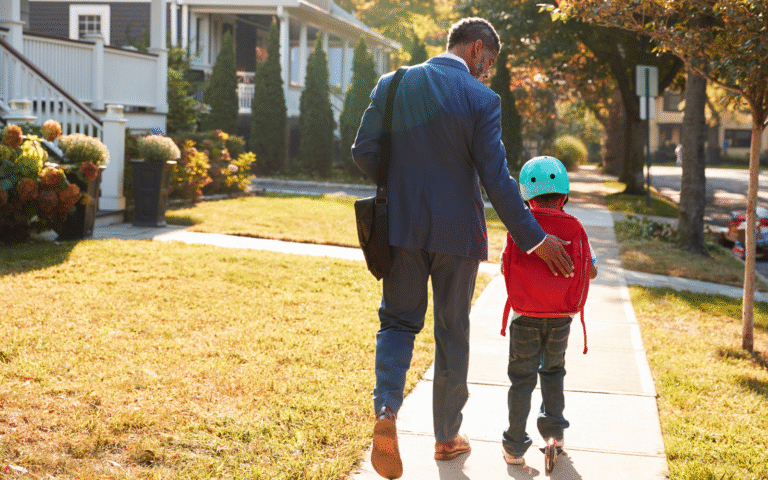Baby Walker Safety Tips: How to Keep Your Baby Safe 2025
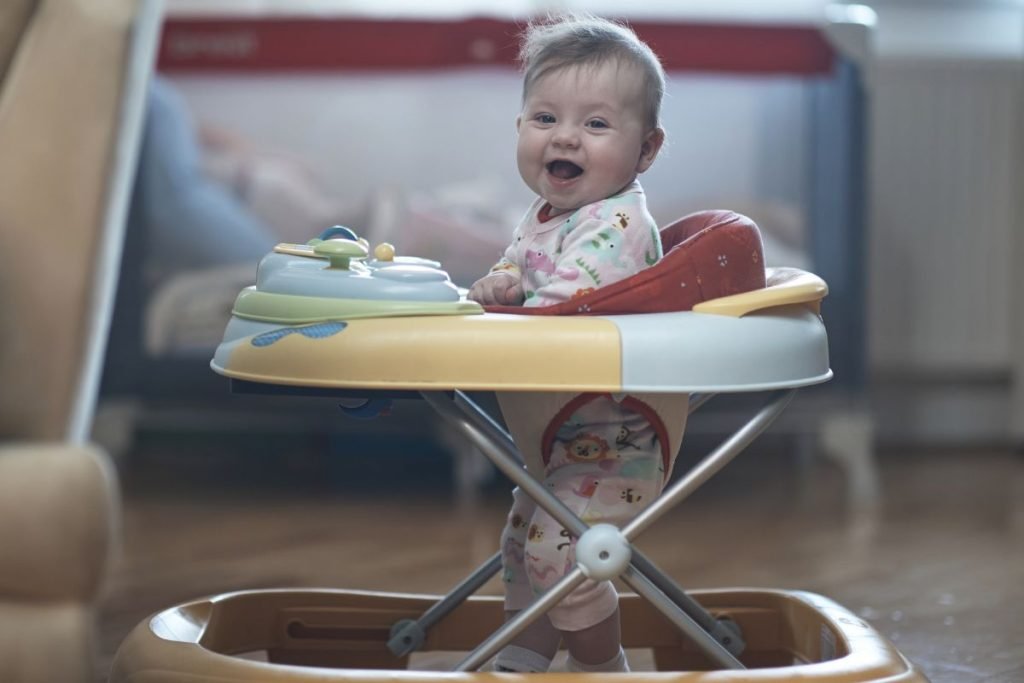
Are you a parent eagerly watching your baby take their first steps, considering the excitement of exploring around your room?
As your little one reaches the age of crawling and walking, you might contemplate using baby walkers.
In this blog post, I’ll share essential baby walker safety tips to ensure your child’s exploration is fun and safe, from preventing dangerous objects from falling within reach to understanding the risks of a false sense of security.
But you need to know that according to the American Academy of Pediatrics, walker injuries happen more often than we expect. Don’t worry. We will determine how your baby can roam around in your house by following the best safety tips.
Key Takeaways – Baby Walker Safety Tips
- Supervise the baby closely and remove hazards when using a walker.
- Introduce the Walker gradually, starting with short daily sessions.
- Be aware of potential risks like delayed development or dependency.
Taking Precautions for Baby Walker Safety
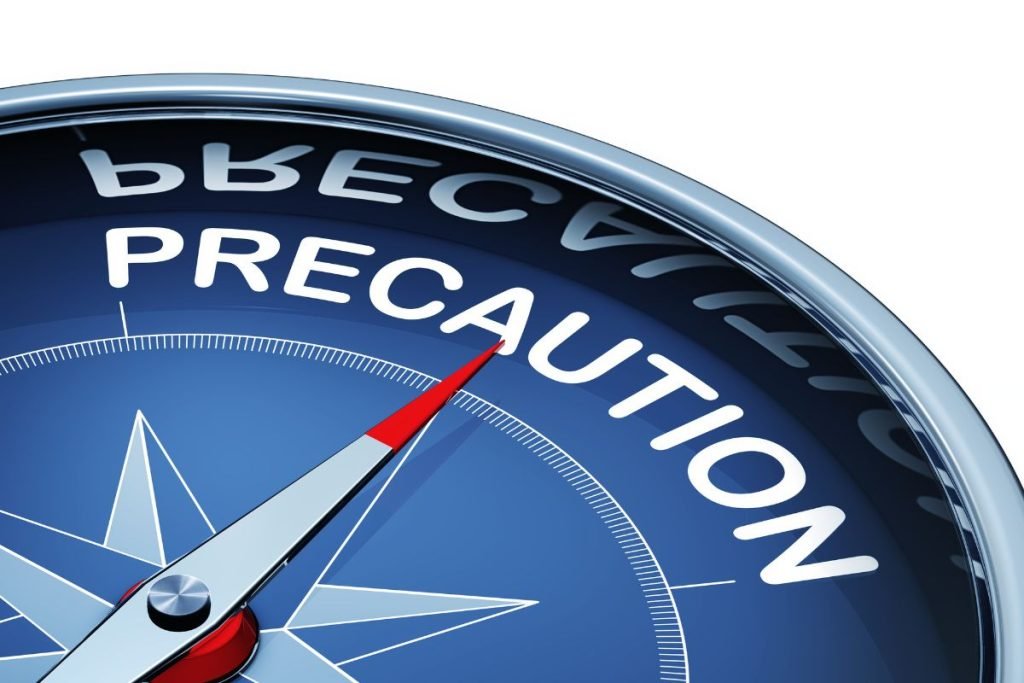
Ensuring baby walker safety is crucial. The American Academy of Pediatrics emphasizes caution due to potential injuries. Avoid risks like grabbing dangerous objects and falls as your baby uses a walker.
Parents should prevent accidents by removing sharp objects, creating a safe environment, and avoiding stairs. Use the Walker on flat surfaces to prevent tipping and support your baby’s first steps securely, fostering a protective and enjoyable developmental journey
1. Make Your Home Walker-Friendly
Creating a safe space for your baby’s walker adventure is crucial. Remove hazards like sharp objects or small items within your baby’s reach. This ensures a hazard-free environment for your little one to explore.
Additionally, ensure the Walker can move freely without getting stuck or grabbing dangerous objects. This simple step enhances the safety of your baby’s exploration, preventing any serious injuries and unwanted accidents.
2. Keep an Eye on Your Baby in the Walker
Your watchful eyes are the best safeguard for your baby in the Walker. Supervise your little one at all times during their walker excursions. Being close by allows you to react quickly and prevent accidents.
This hands-on approach ensures that your baby’s experience with the Walker is fun and secure. Stay close to provide your child and walkers with guidance, support, and assurance.
3. Use Shoes if Outside
When taking your infant in the Walker outdoors, consider your baby’s foot safety. Protect their feet from falls by making them wear comfortable shoes. This simple precaution guards against unexpected items on the floor or the ground and ensures a pleasant outdoor exploration experience.
Using shoes adds an extra layer of protection, allowing your baby to enjoy their time in the Walker without any discomfort or risks.
Introducing Your Baby to the Walker
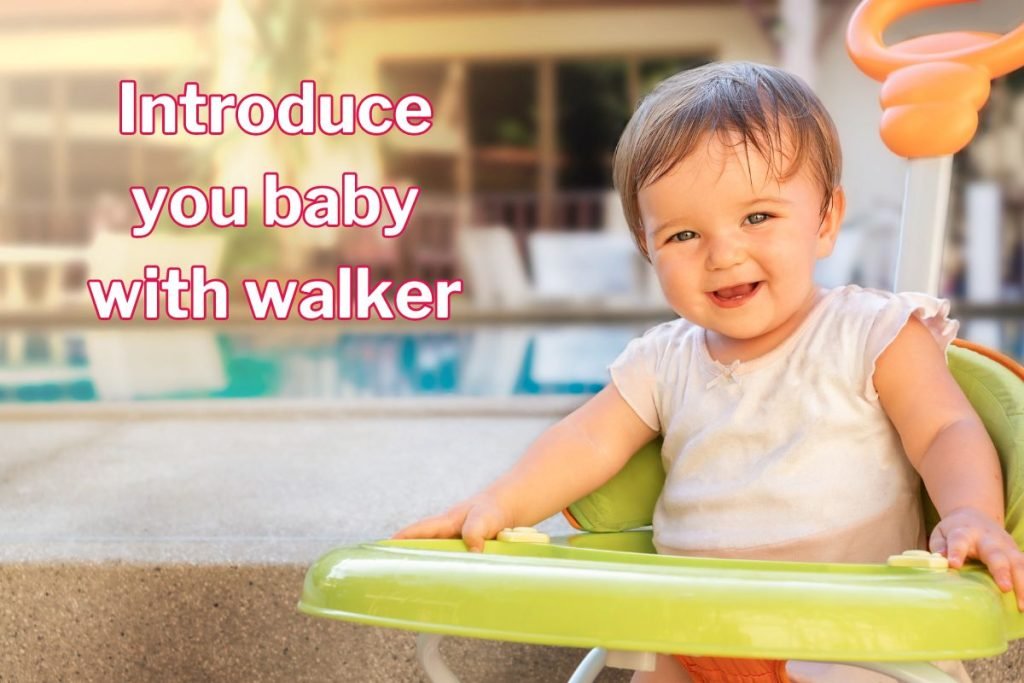
Introducing your baby to the Walker is a significant step in their development. Prioritize baby walker safety tips to prevent injuries.
Be cautious about potential risks like grabbing dangerous objects or falls. Supervise your baby to ensure a safe exploration. Encourage their first steps with the Walker for secure and enjoyable learning.
If you’re deciding between different baby mobility aids, check out our guide on Baby Walker vs Bouncer to understand the pros and cons of each.
1. Help Your Baby Feel Comfortable
Making your baby’s experience in the Walker delightful starts with ensuring their comfort. Place soft padding in the Walker to provide a cozy environment. This simple addition makes the Walker more comfortable for your little one and creates a positive association with the experience.
By incorporating soft padding, you’re making the Walker first and the exploration journey enjoyable, nurturing a sense of security for your baby.
2. Make Sure Legs Are Positioned Properly
Proper leg positioning is key to your baby’s comfort and safety in the Walker. Check that your baby’s legs are comfortably placed in the leg holes. Ensuring that baby walkers have a correct fit not only prevents any potential discomfort but also contributes to the overall stability of the Walker.
This small yet crucial step enhances your baby’s ability to learn to walk and move freely and confidently, making their early steps in the Walker a positive and secure experience.
3. Encourage Your Baby to Stand
Introducing your infant or child to the concept of standing is a milestone in your baby or child’s development. Gradually encourage your little one to stand while using the Walker. This action strengthens their leg muscles and prepares them for the exciting walking journey.
By fostering this skill in a safe and controlled play environment, you’re actively contributing to your baby or child’s physical development and building the foundation for future mobility.
4. Teach Your Baby to Move the Walker
Guiding your baby in pushing the Walker is an engaging way to encourage movement. By actively participating in the process of push, you’re making the experience enjoyable for your little one and aiding in the development of motor skills.
This hands-on approach instills a sense of accomplishment in your baby, making each push of the Walker a tool for both fun play and learning.
5. Be Patient and Use for 15 Mins/Day
Patience is key as your baby gets accustomed to the Walker. Start with short sessions, around 15 minutes per day, to prevent fatigue and injuries. This gradual approach allows your little one to adapt comfortably to the new activity.
Keeping the sessions short and enjoyable ensures that the Walker becomes a positive part of your baby’s routine, fostering a healthy and happy exploration and play experience.
Being Aware of Baby Walker’s Disadvantages

Awareness of baby walker disadvantages is crucial for your baby’s safety. Understand differing opinions, prevent dependency, check your baby’s feet regularly, choose a stable walker, and use it on a level surface.
For a list of recommended walkers that prioritize safety, explore our guide on Best Baby Walkers for informed choices.
Avoid stairs to ensure a secure environment for your baby’s exploration, balancing fun and safety in their developmental journey.
1. Know That Some Oppose Baby Walkers
Parents need to be aware that opinions on baby walkers can vary. Understanding differing perspectives on their use allows you to make informed decisions for your baby’s safety and development.
Stay informed about potential risks and benefits, considering a balanced view to make choices that align with your parenting philosophy.
2. Prevent Dependency on Walker
While baby walkers with wheels can be a fun tool for exploration, it’s crucial to avoid creating dependency. Use the Walker as a stepping stone for your baby’s mobility journey, not a constant aid.
Balancing the use of toys and the Walker with other developmental activities ensures that your baby experiences a well-rounded and supportive environment for growth.
3. Keep Feet Safe
Regularly checking your baby’s feet and walkers is a simple yet important practice. Ensure there are no injuries, signs of discomfort, or marks caused by the Walker.
This proactive approach helps you address any potential issues promptly, contributing to your baby’s comfort and safety during their exploration. Ensuring the safety of your child’s feet should be a top priority to provide a positive experience for them.
4. Avoid Tipping Over
Choosing a stable walker is a key precautionary measure. Ensure the Walker is on a flat surface to prevent tipping over. This step not only guarantees the overall safety of your baby but also provides them with a secure and confident environment for their movements.
By selecting a stable walker and monitoring its placement, you minimize the risk of accidents and falls and enhance your baby’s experience.
5. Keep Away from Stairs
One of the fundamental safety guidelines is always to use the Walker on a level surface. Avoiding stairs is crucial in most walker injuries, preventing accidents and ensuring your baby’s well-being.
By adhering to this precaution, you create a safe zone for your baby’s exploration and play, allowing them to enjoy the benefits of the Walker without unnecessary risks. Prioritize a level floor or surface to make the walker experience enjoyable and secure for your little one.
Summary
In this guide, we’ve shared crucial tips for a safe and enjoyable baby walker experience. Create a walker-friendly home and introduce the Walker to your baby with care.
Be aware of potential issues, understand differing opinions, and avoid dependency while keeping your baby’s feet safe. Choose a stable walker, use it on a flat surface to prevent tipping over, and stay away from stairs.
Incorporating simple activities can enhance your baby’s development. For ideas, see our suggestions on Baby Walker Exercises that promote safe and effective use.
Following these practical tips fosters a secure environment for your baby’s first steps, ensuring a balance of fun and safety in their developmental journey.
Frequently Asked Questions
Are Baby Walkers Bad for Hips?
Baby walkers can contribute to hip problems. Prolonged use may affect natural hip development. Alternatives like tummy time are healthier for hips.
What Is the Risk of a Baby Walker?
Increased risk of accidents and injuries. Hindrance to natural development milestones. Potential for falls, burns, and access to dangerous objects.
Is It Safe to Use a Walker for Babies?
Walkers pose safety risks for babies. The American Academy of Pediatrics advises against their use. Safer alternatives promote better development.
How Long Can a Baby Stay in a Walker?
Pediatricians recommend minimal use. Short, supervised sessions are ideal. Avoid prolonged use to prevent potential risks.
At What Age Can a Baby Use a Push Walker?
When baby can stand and walk with support. Usually around 9-12 months. Ensure it’s designed for early walkers for safety.
